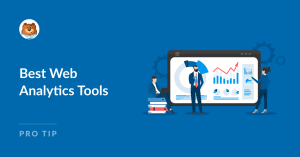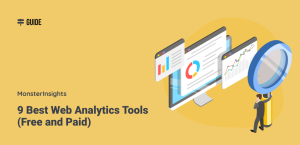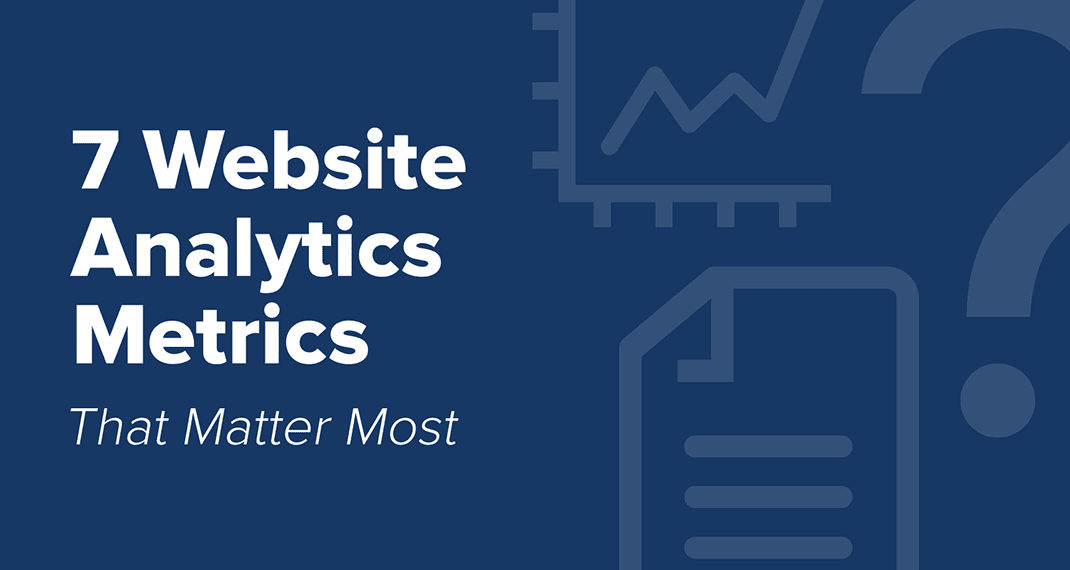Top Website Analytics Tools to Track Your Site’s Performance
Understanding your audience, enhancing the user experience, and boosting conversion rates are all important goals that can be accomplished by monitoring the performance of your website. In order to accomplish this, website analytics tools provide information that are of great value. Whether you are operating a corporate website, an e-commerce website, or a blog, utilizing the appropriate analytics tools can make a significant difference in the success of your website. In this post, we will discuss some of the best website analytics tools that you can use to monitor and improve the performance of your website. Top Website Analytics Tools to Track Your Site’s Performance
1. Google Analytics
The most popular website analytics tool is Google Analytics, which provides a complete set of tools that can monitor anything from user activity to traffic sources. Google Analytics is the most extensively used website analytics tool.
Key Features:
The analysis of traffic is provided by Google Analytics, which offers in-depth insights into the origins of your traffic, which may include search engines, social media, direct visits, and referrals.
Monitoring user behavior involves keeping track of how users interact with your website, including page visits, bounce rates, and the average length of a session.
Audience Segmentation: To gain a deeper understanding of your consumers, you should segment your audience according to demographics, interests, devices, and other information.
Conversion Tracking: In order to evaluate the effectiveness of your marketing activities, you should first establish targets and then track conversions.
Why Use Google Analytics?
There is no cost associated with using Google Analytics, and it combines without any complications with other Google products like Google Ads and Search Console. In addition to providing a plethora of data that can assist you in making educated decisions regarding your website, it is an excellent choice for both novice and experienced users.
2. SEMrush
In addition to its primary function as an SEO tool, SEMrush also provides a comprehensive set of website analytics services that can assist you in monitoring the performance of your website.
Key Features:
Gaining insights into the traffic that your website receives, including the top pages, traffic sources, and geographical data, is what traffic analytics is all about.
The purpose of conducting a competitor analysis is to determine the strengths and weaknesses of your website by comparing its performance to that of your competitors.
A full audit of your website’s search engine optimization (SEO) health should be performed in order to uncover any problems that may be harming your rankings.
Utilizing indicators including as engagement, social shares, and backlinks, content analyzers allow you to evaluate the effectiveness of your content by tracking its performance.

Why Use SEMrush?
For companies who are interested in enhancing their search engine optimization (SEO) and content marketing strategy, SEMrush is a valuable tool. When it comes to staying ahead of the competition in your sector, its capabilities that analyze competitors are especially helpful. Top Website Analytics Tools to Track Your Site’s Performance
3. Hotjar
The user behavior analytics tool known as Hotjar provides you with the ability to gain a better understanding of how users interact with your website by means of heatmaps, session records, and feedback polls.
Key Features:
The use of heatmaps allows you to visualize the areas of your website where people are clicking, scrolling, and spending the most time.
You may observe how real users traverse your website by watching records of their sessions, which are called session recordings.
Conversion Funnels: Determine the points in your conversion funnel where people are leaving, and then implement optimization strategies to boost conversions in those regions.
Collecting direct input from consumers through on-site polls and surveys is an important part of the feedback collection process.
Why Use Hotjar?
Providing a visual picture of user activity is one of the many ways that Hotjar is a useful tool for enhancing user experience (UX). It is especially helpful for locating and correcting usability issues that may be preventing conversions from occurring.
4. Ahrefs
One more well-known search engine optimization (SEO) tool is Ahrefs, which similarly provides comprehensive website analytics tools, with a special emphasis on backlink analysis and organic search performance.
Key Features:
Performing backlink analysis involves keeping track of the backlink profile of your website, which should include new, lost, and broken links.
Monitoring the keywords that are bringing visitors to your website and analyzing how well they are doing over time is an important part of organic search traffic.
The material Explorer allows you to discover high-performing material in your niche and evaluate the traffic, backlinks, and social shares associated with that content.
The purpose of a site audit is to identify any technical SEO concerns that may be affecting the performance of your website.
Why Use Ahrefs?
Ahrefs is an excellent choice for companies that must rely largely on traffic from organic search results. As a result of its extensive backlink analysis and keyword tracking capabilities, it is an invaluable tool for enhancing the search engine optimization performance of your website.
5. Crazy Egg
Utilizing heatmaps, scroll maps, and A/B testing, Crazy Egg is yet another user behavior analytics tool that offers insights into the ways in which users interact with your website.
Key Features:
See where users click and how far they scroll on your sites with the aid of heatmaps and scroll maps, which will assist you in determining which material generates the most interest.
Through the use of A/B testing, you may determine which of your web pages performs better in terms of user engagement and conversions by testing several versions of your website.
Confetti Reports allow you to acquire a more in-depth understanding of user activity by breaking down clicks according to referral source, search term, and other factors.
Visitor Recordings: Listen to recordings of user sessions in order to locate any places in the user journey that may cause discomfort.
Why Use Crazy Egg?
Businesses that are interested in improving the appearance of their website as well as the user experience would find Crazy Egg to be suitable. Through the use of its A/B testing and heatmap tools, it is simple to recognize and execute enhancements that have the potential to result in increased conversions.
6. Matomo
Matomo, which was originally known as Piwik, is an open-source analytics platform that provides complete control over your data. As a result, it is an excellent option for companies who are worried about protecting their customers’ privacy.
Key Features:
Personalized Dashboards: In order to monitor the parameters that are most important to your company, you can create dashboards that are fully customizable.

Create in-depth profiles of your visitors, including information on their behavior, demographics, and engagement history. Here are some examples of visitor profiles.
Electronic commerce tracking involves keeping an eye on the performance of your online store, including sales, conversion rates, and the popularity of your products.
Tracking specific actions on your website, such as button clicks, form submissions, and video plays for example, is referred to as event tracking.
Why Use Matomo?
An excellent alternative to Google Analytics, Matomo is an excellent choice for companies who place a high priority on data ownership and privacy. Additionally, it provides the ability to host the platform on your own servers, in addition to offering extensive analytics features.
7. Adobe Analytics
Advanced analytics capabilities are made available to major businesses through Adobe Analytics, which is a component of the Adobe Marketing Cloud. It is well-known for the significant data analysis and reporting capabilities it possesses.
Key Features:
Real-Time Analytics: This feature allows you to monitor the performance of your website in real time, which enables you to make decisions based on data in a timely manner.
Tracking the whole customer journey across a variety of channels and touchpoints is an important part of customer journey analysis.
By utilizing machine learning algorithms, predictive analytics allows you to forecast future patterns and outcomes based on the data you have collected.
In order to acquire more in-depth understanding of user behavior, advanced segmentation involves the creation of complicated audience segments.
Why Use Adobe Analytics?
Adobe Analytics is most effective when used by large businesses that have highly complicated analytics requirements. The extensive capabilities of this software enable you to conduct in-depth analyses and optimize your marketing efforts across a variety of advertising platforms.
Conclusion
It is crucial to track the performance of your website in order to gain an insight of your audience and to make decisions based on data, which can improve overall user experience, search engine optimization, and conversion rates. There is an analytics tool available that can cater to your requirements, regardless of whether you are the proprietor of a tiny firm or the manager of a complex enterprise. These strong tools provide you with powerful solutions to help you optimize the performance of your website. From the extensive functionality of Google Analytics to the user behavior insights of Hotjar and Crazy Egg, these tools offer powerful solutions.






